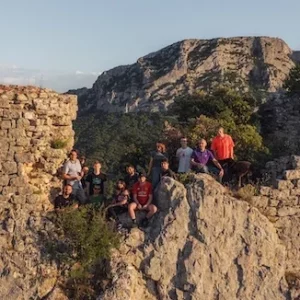
You are using intentional camera movement photography to create your impressionist and abstract images. Could you explain this technique, what initially drew you to ICM photography, and how has it shaped your individual style over the years?
It is the movement of the camera; it’s about using specific settings, like the length of exposure, and also utilizing something like an ND filter to control the light, allowing for a duration during which the shutter is open to capture the camera’s movement. This way, it creates patterns, soft textures, or various outcomes.
Looking at the work of photographers like Valda Bailey, a photographer from Sussex who is a leading light in this field. She used intentional camera movement and multiple exposures together to create this kind of painted result, something I really liked.
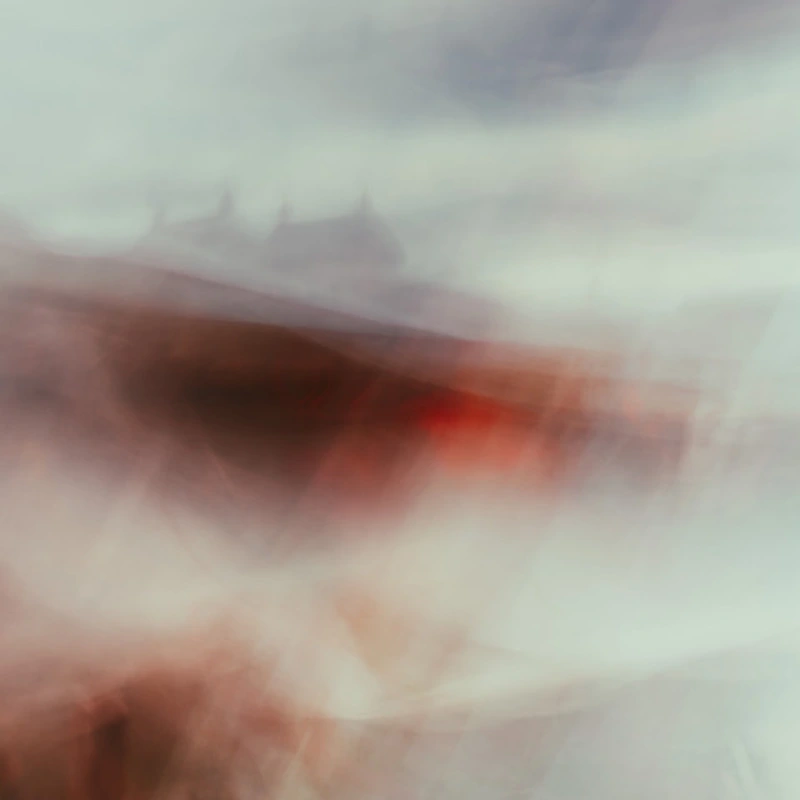
I’m someone who gets bored very quickly, I’ve moved quickly from one photographic technique to another. And with ICM, it’s because every day is different, every time the camera comes into play, even in the same location, everything is a surprise. You’re never really sure what you’re going to get.
And also, I kind of like being challenged. To me, nothing is simpler than going to a beautiful landscape, putting your camera on a tripod, and pressing the shutter. For a person doing ICM, it’s a huge challenge to find the right compositions, exposures, and the right amount of movement – not too much, not too little. So, it’s very tricky. There are lots of skills to be developed and deployed in the technique. In my case, it’s all about achieving the initial results that I then need to take further in the heavy post-processing that I do. This post-processing significantly shapes the overall look and feel of my work.
My “normal” photography used to be very average; there was nothing exceptional about it. But the Intentional Camera Movement gave me the platform, the niche in which I can thrive. And I ended up becoming reasonably well-known because of it. And that wouldn’t be the case if I were focusing on portraits or normal landscape photography because I was just quite average.
I’m mainly still photographing the same subjects I used to, but now I’m using ICM photography to get very different results.

How long did it take you to transition from the “normal” photography to this ICM style?
I first stumbled into it about ten years ago. So, I took my initial shots around August 2013, but it might have been October 2013 when I made a more focused attempt. I wouldn’t say I was happy with the final results of those images until perhaps the following year. So, there was a lot of experimentation and trial and error involved; I was essentially refining the technique and exploring it to the extent where I felt I had gone beyond what you might consider the norm when people try ICM photography. I always wanted to do my own thing, lean into my own skills.
Do you like Andrew's interview?

Your photos are inspired by 19th-century English master JMW Turner. How does his work influence your own photography, particularly in terms of form and color scheme?
Yes, I’m definitely inspired by it. I was influenced by the kind of locations and kinds of scenes that he painted because of the area I live in.
I live in a very beautiful part of Northumberland in the north east of England, and it’s an area where he’d been numerous times through his life doing a lot of preparatory sketches for work. You’ve got locations nearby like Dryburgh Abbey, Harbottle Castle, Bamburgh Castle, Lindisfarne, Norham Castle, which is like a very famous set of locations… All of these places are reasonably close to me, and because there hasn’t been a lot of development in industry or anything around this area, a lot of the scenes have not changed at all. So a lot of the places look pretty much as they did 200 years ago because the area is very rural, mainly focused on farming.
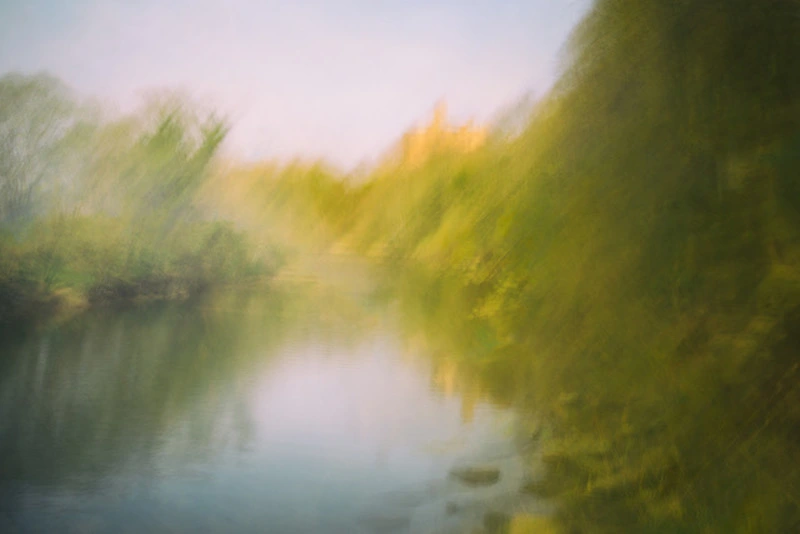
I’ve got those right at my own doorstep, which he also painted, so I’m always studying a bit of his work. I knew a lot of the locations and then looked at them with my own eyes, standing in probably similar positions where he sketched from. There is that side of influence, and certainly the way he painted. When I started photographing this way, in my own eyes, I tried to interpret what he saw in my head. So definitely the color scheme from then, the aging effect…

In your journey as a photographer, how did you go about finding your niche and developing your individual style? Were there any significant challenges or breakthrough moments along the way?
I always claimed myself as a reasonable photographer but discovering ICM photography I felt like I found a niche I could thrive in and that I could make a business as well. ICM gave me the opportunity to have that very individual niche because… when you think about photography as a whole and all the various aspects of it like sports photography, portraits, landscape, abstract… you can apply ICM photography to all of those as well. It may be a very small niche, but everything you can do with normal photography, you can do with ICM. It’s a small niche but massive at the same time, it gives you so much freedom.
The way I photograph, usually because I’ve got limited time to be out, so I’m probably not going out at the ideal times to photograph, like not always at the golden hour. I get out when I have a spare hour and I just go and snap 300 or 400 images of the various movements, then coming back and spending a month in front of the computer at work. That’s the kind of way I work because of lifestyle and responsibilities.
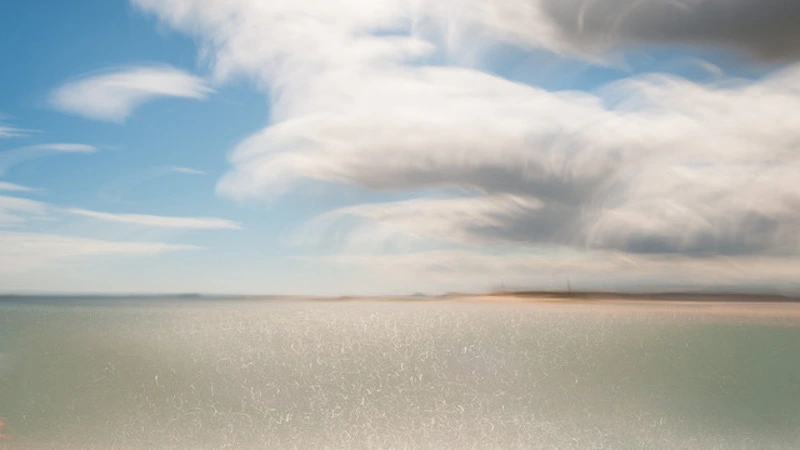
A beautiful blue sky might turn into a very ominous stormy sky because of how the shapes work together and how the colors and textures come together.
And for the challenges… There are many, certainly in the editing side of things. There were a few moments like a light bulb going off. And that’s, you know, that’s purely down to spending hours and hours and hours just experimenting in Photoshop, no plugins or software. And it was very much like a journey of discovery, as you know, as I went through everything and it all developed with a very individual workflow. It was a long journey, and I’m still tweaking; I’m still never always 100% happy.
There were some moments where I was experimenting, rotating things around, and I thought that that blended together beautifully, and that became almost like a hallmark that I would almost use on every image, rotating things upside down.
So, it’s the little things like that just come from spending time, playing around with images, using blend modes, and seeing how pictures interact with each other. Nobody taught me any of this; it’s all self-discovery, which is maybe why it’s hard to teach any of this. But I enjoyed the journey of just experimenting and playing around.
There’s always experimentation, and every day is a learning day.

Your work has been featured in various publications and exhibits. Is there a particular achievement or recognition that you are most proud of?
Yes, the Old School Gallery in Alnmouth, Northumberland. It was my debut solo exhibition. That was a proud moment, an exhibition in a good gallery nearby. That was initially a shock because the gallery came to me and asked if I was interested, rather than me having to go knocking on doors to secure an exhibition opportunity. I didn’t have to do anything, but I was also scared witless and didn’t have any confidence in myself. But we did it, and it was an experience. That was a very proud moment in my career; people were coming from very different areas of the country to see my exhibition, and that blew my mind. To think that people would put in the effort to come and see my work was a big eye-opener and heartwarming thing – that people appreciated the work and also myself.
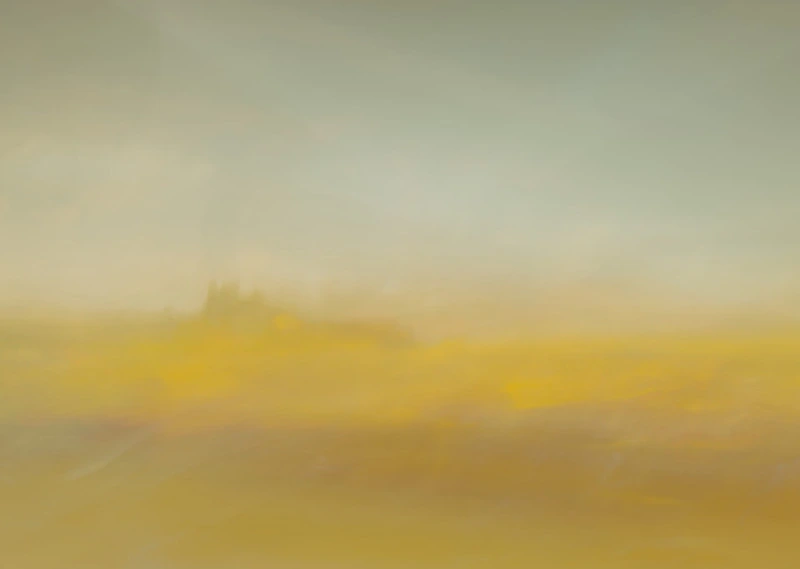
As a software company focused on creating tools for photographers, both our team and our community are highly interested in the technical aspects of your work. Could you please share the camera and equipment that you prefer to work with during your photography process?
Photoshop is one of the main things, like on the editing side of things, Lightroom to start with, Photoshop, and then after that one particular module of the Nik collection which is made by DxO. This is the Analog Efex Pro module of the Nik collection, I use that extensively and then it’s back to Photoshop and then back to Lightroom. So, Analog Efex Pro in the Nik collection is one of the main creative elements of my editing work. I use a Nikon D850 as a camera and I edit on my PC.

What tools do you use for your post-processing? What settings do you use for your images?
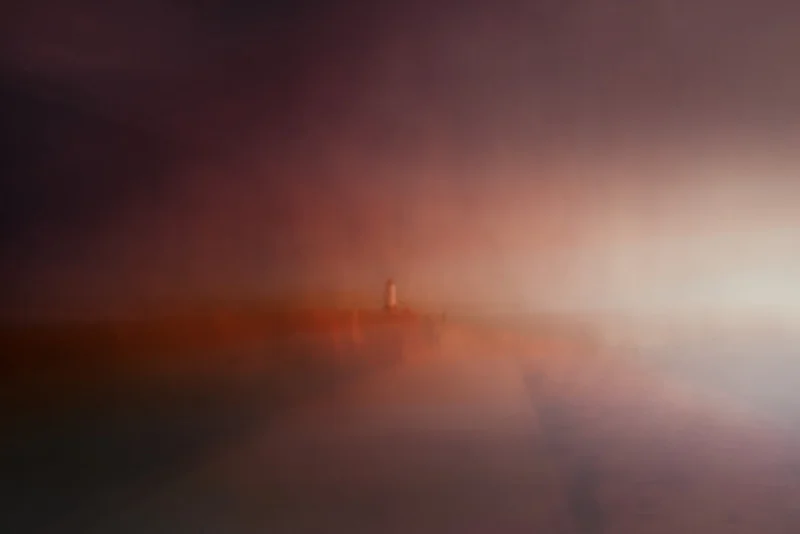
In Analog Efex Pro within the Nik Collection, I’ve developed my own set of presets that are also available for sale on my website. I use these as starting points, as they offer variations in color schemes and the positioning of double exposures. When I review the previews on the left-hand side of the screen, I can get a rough idea of how the base image will interact with the preset. From there, I might select a preset and then proceed to make adjustments or even reconstruct the entire effect from scratch. Although I’m a bit lazy in this regard, I usually opt to use my presets as a foundation and then tweak elements like exposures, vignettes, and other standard adjustments. The preset functionality in Analog Efex Pro streamlines the process, even though I may need to invest further creative effort to determine where an image should ultimately go.
There’s not much more to it. After the process in Analog Efex Pro, I circle back to Photoshop for additional tweaks, such as using a curves layer or adjusting hue and saturation. These tweaks are about refining color, which holds significant importance for me. If the color is slightly off, the entire image can feel compromised. Making sure I’m happy with the color is important to me.
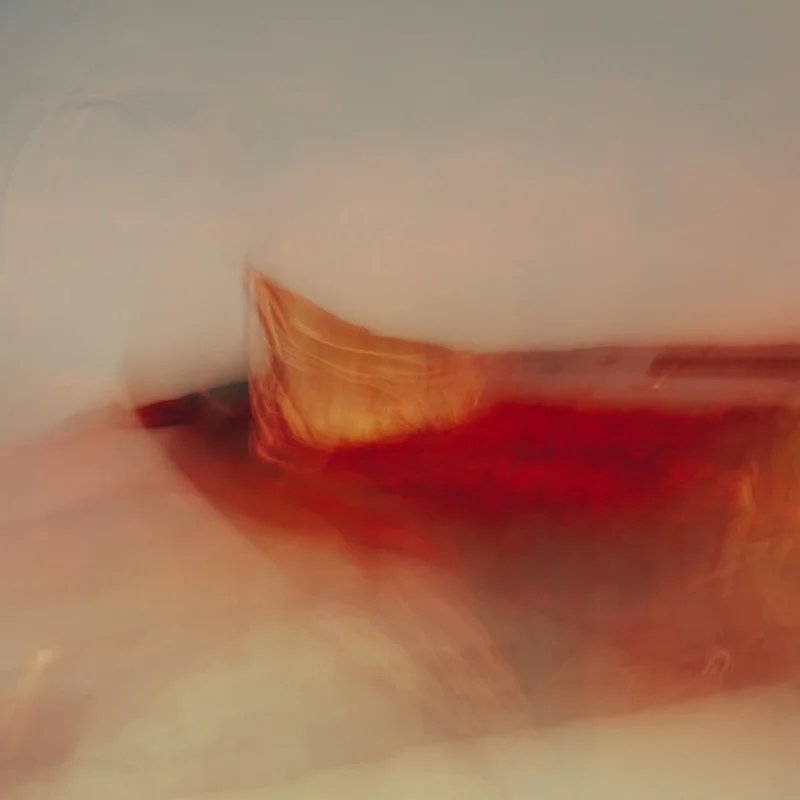
Can you talk about your affiliation with the Nik Collection of plugins by DxO and how you incorporate these tools into your creative process?
They got in touch with me. I think it was one of those things where you sometimes reply or fill in a survey from email or whatever. And I think I filled it in. They got back to me, and I’m still not sure if they know exactly what I do with their software. I think they’ve made significant changes to their affiliate marketing recently. It seems they’ve removed many of the influencer types and shifted towards people who are actively working in the field, individuals who have dedicated YouTube channels focused on photography, rather than just general influencers. It seems they restructured everything. I believe I only just joined the affiliation, and then things changed. So I’m grateful that I was one of those who remained.

Regarding the Nik Collection, I’ve been using it long before DXO acquired it. I used it when it was simply the Nik Collection. I’ve been using it for perhaps 20 years or close to that. Regardless of what style I’ve been pursuing, whether it’s my old black and white approach the Nik Collection has been used, I’ve utilized Silver Efex Pro for a long time because it was the best software I found for black and white photography. It might still be the best. So I’ve always been within that kind of ecosystem, a devoted fan of their products for many years.
Does this interview inspire you?

You host a weekly YouTube live stream called "Tuesday Night Edits" where you edit your work live. What prompted you to start sharing your editing process with others, and what kind of response have you received from your audience?
Well, YouTube has been part of my routine for quite a few years, and when it comes to streaming, that concept was actually inspired by watching gamers engage in live streams.
It was the gaming community that actually got me thinking about doing live streams. I had done a few videos before, with one of my earliest ones showcasing my workflow at the time. It was around a 20-minute video that I uploaded. Then, a couple of years later, as I considered putting more effort into building a YouTube channel – since YouTube for photographers was becoming popular, and many were finding success through it – people like Thomas Heaton and Nigel Danson, both having substantial viewerships, and even some American YouTube photographers. It seemed like the right time when everyone was giving it a shot. Surprisingly, when I logged in again, I found that I had gained around 150 subscribers just from that one workflow video.
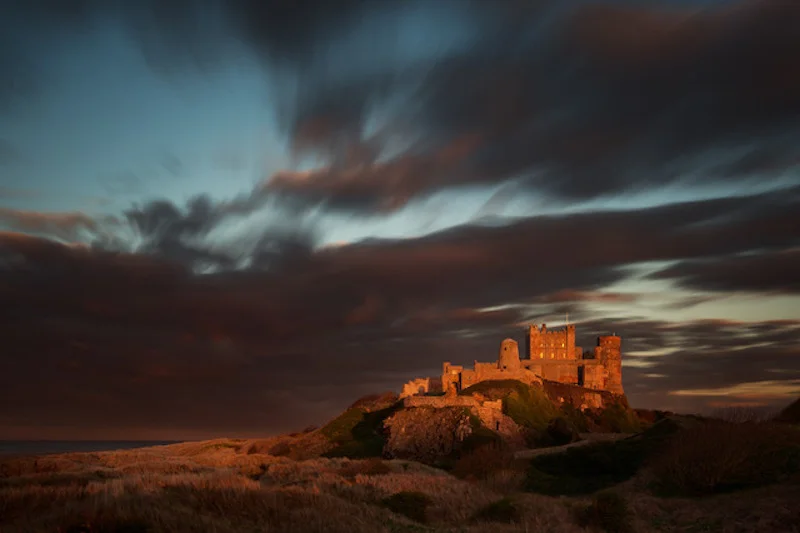
One evening, I decided to go live, and it worked. So I kept going. As of last night, I’ve completed my 230th episode. We’ve been at this for over five years now, and it’s been a lot of fun.
You start seeing familiar faces in the chat room, and these regulars are often the most supportive of me and the channel. Many of them contribute on Patreon, or they’re YouTube members. They also engage on my Discord server and other platforms. I spend time watching other live streams and participating in different communities, even outside of photography, such as the gaming world. I find myself enjoying watching more than playing, especially when I’m not that great at the games. It’s much more satisfying to watch someone skilled. When I’m playing by myself, I tend to get frustrated quite easily. I’m particularly drawn to the sense of community that these channels offer.
Now, for my streaming videos, I’m cautious about not giving away all my knowledge for free every week on YouTube. So, Tuesday nights have evolved into more of an entertainment format rather than purely educational. It’s more about discovering what’s in store for today, what image will come to life.
I focus on interacting with the people in the chat, allowing them to entertain themselves and others, as they often share a good laugh at their own expense or at my quirks. The goal is to provide a light, enjoyable atmosphere and a touch of creativity.

You offer 1-2-1 tuition.What motivated you to start teaching others, and what can participants expect to learn from your workshops?
A lot of the people I knew do group workshops and that kind of tuition. They take clients out for the day, exploring mountains, coastlines, or other locations. They position clients to achieve good compositions amid captivating landscapes. This approach has its merits, but from my perspective, I found my strength lay in post-processing. Clients wanted to learn about that aspect, and it was their inquiries that sparked my interest. I thought, ‘Why not give it a shot?’ After trying a few, I realized I could excel in this domain.
Given my rather reserved nature, stepping into this realm was a bit challenging. Yet, sometimes you need to push beyond your comfort zone. So, I ventured into one-to-one tuition. It works quite well and fills up a day. I typically structure it with a morning session out in the field. We usually focus on a single location with multiple photographic opportunities. During this time, I cover various techniques involving movement, discuss theories, share best practices, and provide insights into optimal settings and light management.
I address common issues that might arise and affect image quality. This groundwork is laid in the morning. In the afternoon, we return to the studio, where I essentially demonstrate my complete workflow using the shots captured earlier in the day.

We work through the process, and depending on available time and their specific needs, we review their own images. We identify strengths, particular shots that stand out, and maybe even walk through an example together. This helps them understand how I craft my images. Sometimes people can observe what I do, but their style is distinct. In such cases, I provide guidance that aligns with their unique approach rather than focusing on strict emulation of my style.
Currently, I prefer one-to-one sessions over group workshops. The schedule typically starts at nine in the morning and wraps up at four in the afternoon. This structure allows me to dedicate time for preparation and leaves the rest of the evening open for further work and personal activities.

What advice would you give to young photographers who are trying to find their unique style? How did you navigate this process yourself?
My advice in photography is to try everything. Yes, you might prefer to do landscape or something like that, but you might end up being the world’s best portrait photographer.
You don’t know until you’ve tried it. So try everything, take up as many opportunities as you can, be prepared for a lot of self-discovery and working by yourself a lot, experiment, embrace all the new technologies, whether that’s software, AI, or cameras even.
If you can, dedicate time to it. I mean I was fortunate enough to basically, when I became self-employed, I was lucky enough to take the best part of the year off and just spend that time concentrating on not only rebuilding my life but also dedicating time to photography.
And that’s where a lot of the experimentation came in. And this was before I started the ICM stuff.
Without that time, I wouldn’t have the more intricate knowledge of Photoshop to be able to push that, you know, one day to use that in my own ICM work to then obviously have the ability to turn these strange blurry images into a desired, turned masterpiece.

Without that Photoshop knowledge which I’ve developed over the years, I wouldn’t be able to get images where I want them to be at the minute. So, you know, you can be prepared for a lot of work, a lot of experimentation. You should always be experimenting. Watch all the YouTube channels that tell you how to do things in Photoshop or whatever software. Watch as much as you can. Learn from others.
And always be prepared to continue learning. One day you will find that unique style and niche. But if you don’t get instant gratification from it, don’t be discouraged and just keep on plugging away, keep on posting it. Keep on putting it on Twitter or Instagram or wherever we’re going to be posting photographs in the future. Just keep on posting it every day. One day, one person will see it, embrace it, and that will be the catalyst for the next step. Just when you need it, there’s always something that will come along to help you along.



